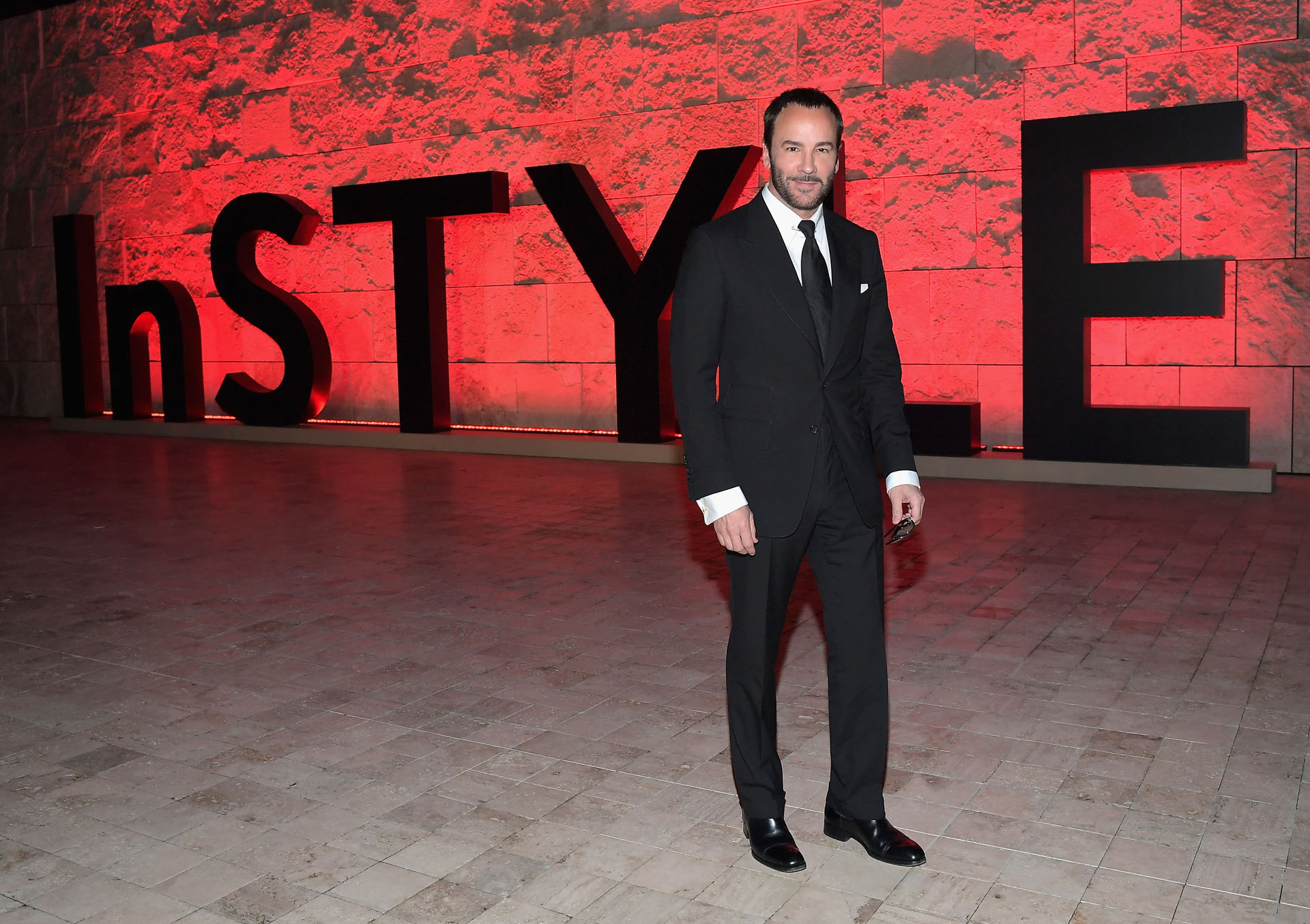HOW TOM FORD BUILT A LEGACY IMBUING FEELING INTO FASHION
BY RHIANNA JONES
To greater humanity, luxury fashion is often seen as an elitist, exclusive, and shallow world intentionally inaccessible to the masses. And as we saw throughout the pandemic, in times of social strife when the world is simultaneously sinking, ablaze, and under pandemic fashion is one of the first indulgences to go, as we swapped our silks and suits for sweatpants at large. High fashion is hardly essential to survival, but its innate imagination, reverie, and desirability is undeniable, providing us with levity and escape. Fashion is a language of self-expression, inviting us to play with our identities and transform into different versions of ourselves. It is this delicate dance between frivolity and fantasy that Tom Ford has built an iconic legacy, bringing substance and sensibility into style.

In his words: “Glamour is something more than what you put on your body. It has to do with the way you carry yourself and the impact you have on others. We live in a material world.
I’m not saying that beautiful things don’t enhance our lives. But, in our culture, we’re never happy.” Ford’s practice is inherently driven by a pursuit of meaning and feeling in fashion. While his suburban Houston upbringing wasn’t the most cosmopolitan experience, moving to New York City and slinking into Studio 54 after class at Parsons gave him his first taste of the disco-era debauchery and glamour that would inspire his design aesthetic for decades to come. His inaugural design stint at Perry Ellis introduced him to high fashion, but he felt called to work in Europe to truly understand style. And following his intuition led him to Milan, where he was appointed Gucci’s chief women’s RTW designer in 1990 when the house was near bankruptcy and struggling to revive its iconography. Gucci needed an electric jolt, and Ford transformed the flailing house into its “golden era,” with his signature provocative exoticism: body-skimming silk dresses, velvet hipsters, snakeskin accessories, and skin, skin, skin. As if reigniting these brands with the same energy and aesthetic that inspired him from his Studio 54 days, the post was a true leap of faith, but one that literally paid off in spades; within a decade Gucci was worth $4 billion. When Gucci Group acquired YSL in 1999, Ford was asked to design women’s RTW while Yves Saint Laurent continued couture. Much to Yves’s chagrin, Ford indeed imbued fresh life in the maison, until departing to start his own eponymous brand in 2005.

With nobody to answer to but himself, Tom Ford established an entire empire from the debut. Beyond launching a women’s, men’s, beauty, eyewear, and accessories line in 2005, he also founded a film production company, Fade to Black, to bring his anomalous creative vision to both fashion and film. He’s always said he designs for “strong, intelligent women who know their own style,” this style comprising Italy’s finest impeccably fitted suits, tailored evening wear, sleek exotic skin accessories, jewel tone palettes, and gold hardware galore. And as a brand gracing the esteemed figures of Michelle Obama, Beyoncé, Anne Hathaway, and Jennifer Lopez to being the designer of choice for Daniel Craig’s suiting for his final four James Bond films, a Tom Ford look commands reverence. His directorial debut, A Single Man, in 2009 received the same public acclaim, starring Colin Firth as a gay college professor in L.A., searching for meaning and feeling in his immaculately curated life in a glass house. The film’s gorgeous cinematography and masterfully designed sets could be extrapolated as a metaphor for Tom’s perspective on society: shiny and seemingly perfect on the outside, but often fragmented and broken in reality. He explored similar themes of raw emotion, dark human truths, and social ennui in his second film, the neo-noir psycho thriller Nocturnal Animals (2016)

Beyond a visual and narrative genius, the power of Tom Ford is his ability to penetrate pop culture, even influencing music as seen in Justin Timberlake’s “Suit & Tie,” to Jay-Z’s “Tom Ford.” Like music, his expressions of cinematic and sartorial art are highly evocative and created to inspire meaning. Ford has said, “You should put on the best version of yourself when you go out in the world because that is a show of respect to the other people around you.” But in an era of performative politics and highly filtered and curated appearances, Ford reminds us of the power of stepping into our truths, and embracing the uniqueness of our stories. Authenticity, not artifice, is our best accessory.

